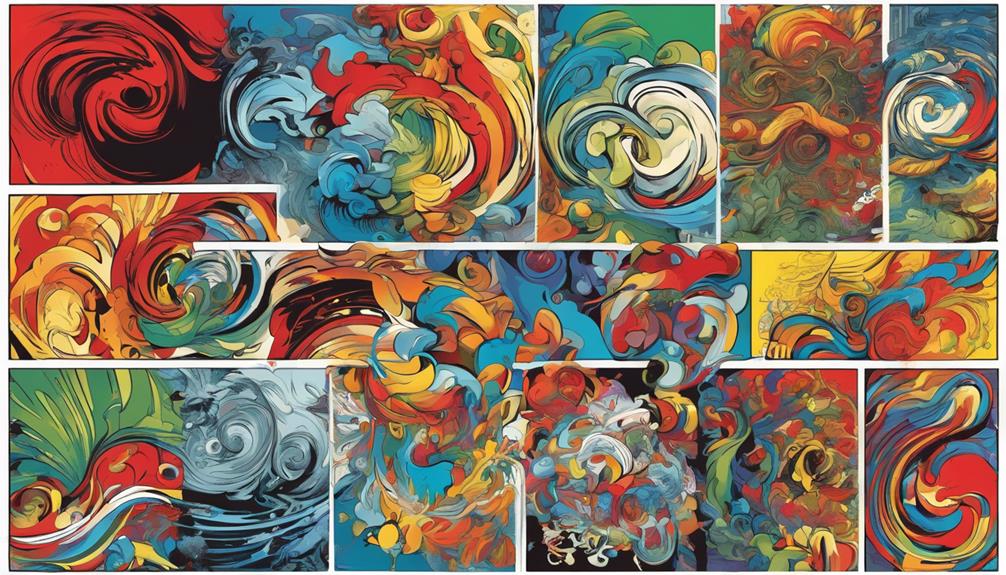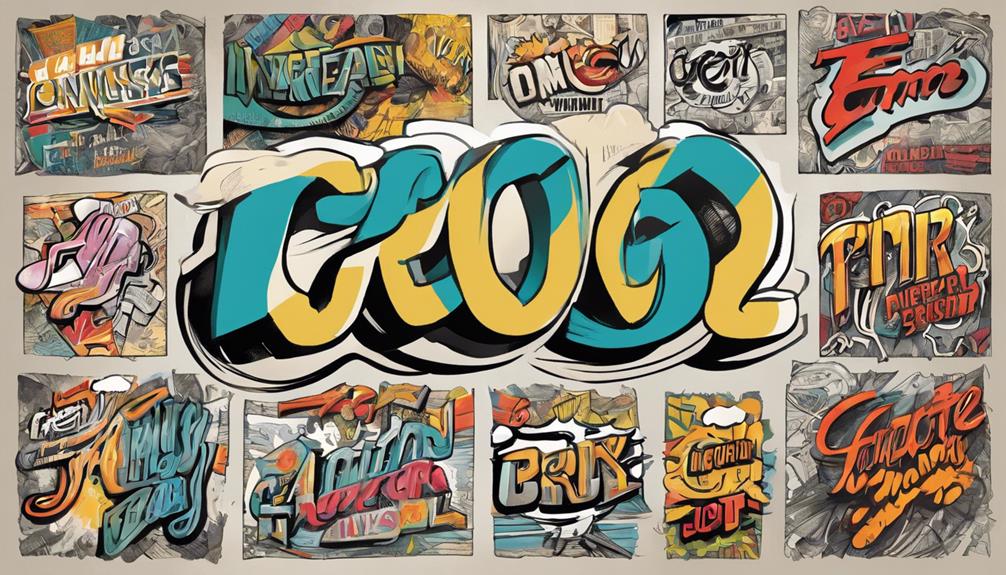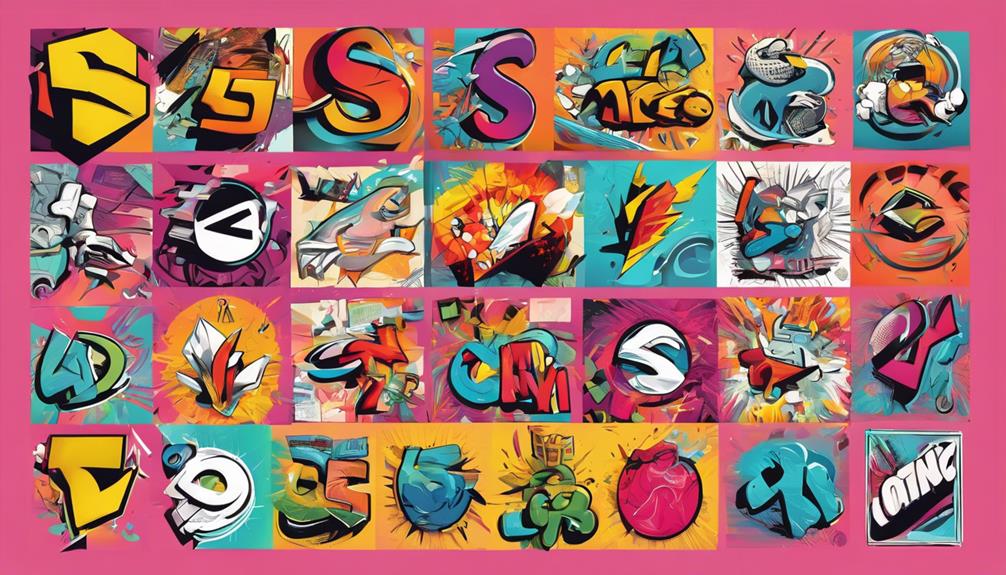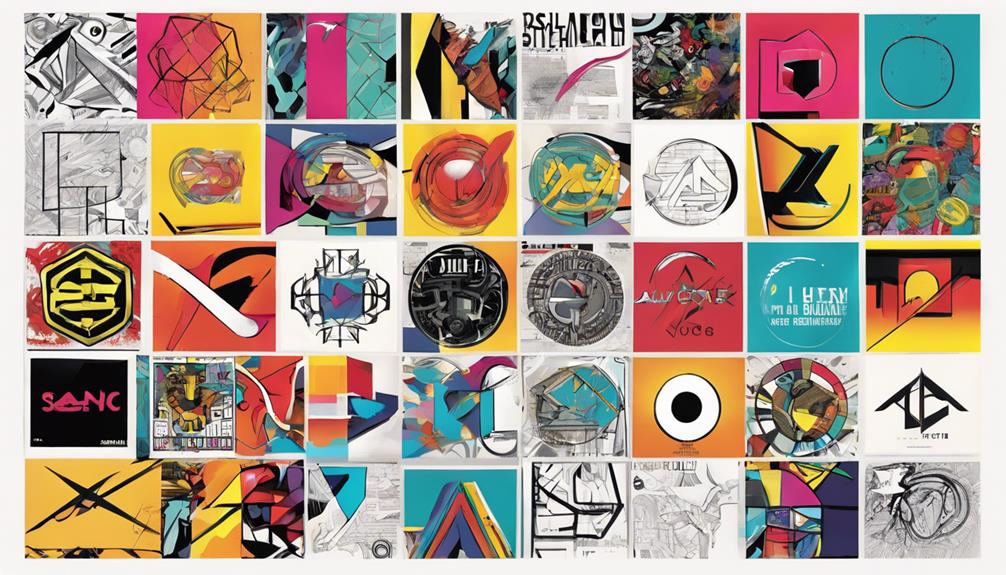In order to design a successful logo, there are key elements to focus on. Begin with simplicity; a clean and straightforward design ensures easy recognition. The choice of colors should be intentional; blue evokes trust, while red symbolizes passion. Typography is also important as it sets the tone for your brand and adds to its uniqueness. Consider experimenting with different styles such as wordmarks or combination logos to add versatility. Lastly, it is crucial to maintain consistency across all platforms to establish a unified brand identity. By mastering these elements, you will create a logo that resonates with your audience. Keep exploring, and you will discover even more valuable insights on effective logos.
Key Takeaways
- Effective logos embody simplicity, ensuring they are easily recognizable and versatile across various applications.
- Color choices in logos significantly influence viewer perceptions and emotional connections with the brand.
- Typography impacts a brand's tone; selecting the right font enhances identity and readability.
- A cohesive brand identity aligns logo design with overall strategy, ensuring consistency in messaging and visual elements.
Significance of Logos in Branding

Logos play an important role in branding by creating a visual identity that grabs attention and fosters recognition. When you think of a brand, its logo often pops into your mind first, influencing your initial impression.
An effective logo enhances brand recall, making it easier for customers to remember you over competitors. It acts as a differentiator in a crowded market, helping you stand out.
Additionally, a well-designed logo reflects a brand's values and mission, creating a solid foundation for your overall identity. By establishing a recognizable image, you build trust and loyalty with your audience, which is vital for long-term success.
Fundamentally, your logo isn't just a symbol; it's a powerful tool for brand representation.
Fundamental Design Principles

Understanding fundamental design principles is crucial for creating an effective logo that resonates with your audience and stands out in the market. Focus on simplicity, relevance, and memorability. A clean design guarantees instant recognition, while relevance ties your logo to your brand's identity. Memorable logos stick in the minds of consumers.
| Principle | Description | Impact |
|---|---|---|
| Simplicity | Easy to recognize and versatile | Enhances recall |
| Relevance | Connects to the brand's industry | Resonates with target audience |
| Memorability | Leaves a lasting impression | Encourages brand loyalty |
Impact of Color Choices

Color choices in logo design play an essential role in shaping viewer perceptions and emotional responses.
When you select colors, consider the psychology behind them. For instance, blue often conveys trust, while red signifies energy and passion. Green can evoke feelings of health and tranquility, whereas black denotes sophistication and luxury.
The right colors can make your brand more relatable and memorable. However, you also need to guarantee good contrast to maintain clarity; too little contrast can make your logo hard to read.
Importance of Typography

Typography plays an essential role in shaping how your brand is perceived and can greatly influence the overall effectiveness of your logo. The right font choice impacts the tone and personality of your brand, allowing you to connect with your audience on an emotional level.
For example, serif fonts often convey tradition and reliability, while sans serif fonts project modernity and simplicity. Custom typography can enhance uniqueness, making your logo stand out even more.
However, readability is vital; if people can't easily read your logo, your message gets lost. By carefully selecting fonts that align with your brand's identity, you guarantee your logo communicates effectively and resonates with your target audience.
This thoughtful approach makes your brand memorable and impactful.
Types of Logo Styles

Choosing the right logo style is key to effectively representing your brand and making a memorable impact on your audience. There are several types of logo styles to evaluate.
Lettermarks focus on initials, making them ideal for brands with lengthy names.
Wordmarks spell out the brand name in a unique font, emphasizing typographic creativity.
Mascots add a relatable character, enhancing brand appeal, while pictorial logos feature recognizable images that reflect your business.
Emblematic logos combine text and symbols within a shape, conveying tradition and trust.
Finally, combination logos merge words with symbols for versatility.
Evaluating your brand attributes and target audience will help you select the most fitting logo style to convey your message effectively.
Current Design Trends

What design trends are shaping the logo landscape today? You'll find that effective logos are embracing several key trends.
First, minimalism remains popular, focusing on simple, clean designs that enhance recognition.
Second, responsive logos are gaining traction, ensuring your logo adapts seamlessly across various platforms and devices.
Finally, hand-drawn styles are making a comeback, providing a personal touch that resonates with audiences.
Here are three current trends to evaluate:
- Dynamic Logos: These logos incorporate movement or change, adding a modern flair.
- Vintage Aesthetics: Nostalgic designs evoke trust and familiarity.
- Bold Typography: Eye-catching fonts create strong visual impact.
Staying updated with these trends can help your logo stand out in a crowded market.
Building a Cohesive Brand Identity

Building a cohesive brand identity requires aligning your logo with your overall brand strategy to create a unified presence across all platforms. To achieve this, focus on consistency in color, typography, and messaging. Each element should work together to convey your brand's values and personality effectively.
Here's a quick reference table to guide you:
| Element | Purpose | Tips |
|---|---|---|
| Color | Evokes emotions | Choose a palette that resonates |
| Typography | Sets tone and style | Use fonts that reflect your brand |
| Messaging | Communicates values | Keep it clear and consistent |
Frequently Asked Questions
How Often Should a Logo Be Redesigned or Updated?
You should consider redesigning or updating your logo every 5 to 10 years, or when your brand evolves considerably. Staying relevant keeps your brand fresh in consumers' minds and maintains its competitive edge.
What Are Common Mistakes to Avoid in Logo Design?
When designing a logo, avoid common mistakes like overcomplicating the design, using trendy fonts, neglecting scalability, and ignoring color psychology. Remember, a clear, relevant, and timeless logo resonates better with your audience and strengthens your brand.
How Can I Test My Logo's Effectiveness?
To test your logo's effectiveness, gather feedback from your target audience. Conduct surveys or focus groups, analyze recognition and recall, and assess emotional responses. Adjust based on insights to guarantee it resonates and stands out.
Should I Hire a Professional Designer or Create My Own Logo?
You should consider your skills and budget. If you're confident in your design abilities, creating your own logo could work. However, hiring a professional guarantees a polished and effective representation of your brand.
What Legal Protections Exist for Logos and Trademarks?
Did you know that 80% of consumers recognize a brand by its logo alone? To protect your logo and brand, consider registering it as a trademark, which grants exclusive rights and helps prevent unauthorized use.
What are the essential elements that make a successful logo?
A successful logo is created by unveiling hosting success secrets. It must be simple, memorable, timeless, versatile, and appropriate for the brand. A good logo should also be unique, recognizable, and able to stand the test of time. Lastly, it should resonate with the target audience and effectively communicate the brand’s message.
Conclusion
In the landscape of branding, your logo serves as the lighthouse guiding customers to your shore.
By embracing simplicity, color psychology, and thoughtful typography, you can craft a logo that resonates deeply with your audience.
Stay attuned to current design trends to keep your brand fresh and relevant.
Remember, a well-designed logo isn't just a visual; it's the heartbeat of your brand, creating connections and lasting impressions.
Shine brightly and let your logo tell your story!









